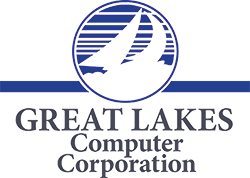The Mid-Sized IT Dilemma
You’ve outgrown your scrappy startup days, but you’re not a Fortune 500 enterprise either. You’re a mid-sized company with 50, 100, or maybe 250 employees. The phones ring constantly, projects run across multiple teams, and your IT infrastructure — once an afterthought — is now a daily backbone of your business.
Here’s the challenge:
- You’re too big for “good enough” IT.
- You’re too lean to afford a full-blown IT department.
That leaves many mid-sized companies in what Great Lakes Computer calls the IT gap: overburdened staff, rising risks, and slow responses that drag productivity down.
In fact, in Why the Demand for Outsourced IT Services Is Exploding, GLC explains that more companies are turning to managed IT to close this gap. Because at the mid-sized level, IT stops being optional — it becomes mission critical.
The Cost of “Good Enough” IT
Too many mid-sized offices operate with a “patch it and move on” mentality. It feels efficient in the moment — until the numbers add up.
Real costs of weak IT in mid-sized companies:
- Lost productivity – 150 employees losing just 30 minutes per week = 75 wasted hours. Multiply by average wages and the cost skyrockets.
- Delayed projects – IT bottlenecks slow down deliverables, hurting clients and revenue.
- Security vulnerabilities – Missed patches = open doors for cybercriminals. (4 Key IT Vulnerabilities and How to Prevent Them)
- Employee frustration – Your talent wants tools that work, not constant glitches.
Great Lakes Computer notes in Accelerating Business Success that slow IT responses aren’t just annoying — they erode your ability to compete.
Cybersecurity: The Mid-Sized Target
Hackers love mid-sized businesses. Why? You’re big enough to have valuable data, but small enough to lack enterprise-grade defenses.
Top threats:
- Credential phishing (Cybersecurity for Credential Phishing)
- Ransomware attacks (The Ransomware Tide Is Rising)
- Insider risk (Insider Risk Management and Data Protection)
- Insurance denials due to weak security (Cyber Insurance Is Becoming Harder to Obtain)
GLC emphasizes in Why Cyber-Ready Now Is Not Enough that compliance checklists won’t save you anymore. Regulators, insurers, and clients demand proactive, layered security.
The Case for Managed IT in Mid-Sized Offices
At this scale, internal IT teams often drown in ticket requests, while strategic projects fall behind. Outsourcing IT doesn’t replace them — it empowers them.
In 3 Reasons SMBs Need Managed Service Providers, GLC explains that MSPs bring:
- 24/7 monitoring
- Faster incident response
- Predictable flat pricing
- Access to compliance and cybersecurity expertise
For mid-sized companies, this means your team can focus on what they do best while MSPs handle the heavy lifting.
Hardware & Infrastructure
Mid-sized companies straddle two worlds: they have more hardware than SMBs, but not the budget for enterprise redundancy. That means server crashes, printer chaos, and endless maintenance eat into IT’s time.
GLC offers relief through IT Hardware Maintenance and Repair and Managed Print Services. By standardizing hardware and outsourcing print, mid-sized offices free staff for strategic projects.
Continuity & Recovery
In a 100-employee office, a ransomware attack or server crash can stop operations completely. Continuity planning is non-negotiable.
GLC highlights in Disaster Protection that true resilience requires tested backups, documented recovery steps, and cloud redundancy.
Roadmap for Mid-Sized IT Success
- Audit your environment – Document devices, issues, and risks.
- Standardize systems – Consolidate POS, print, and cloud tools.
- Secure the perimeter – MFA, endpoint detection, staff training.
- Plan continuity – Automated backups + quarterly recovery tests.
- Partner with experts – Let an MSP handle what your team can’t scale.
Final Word
Office-based mid-sized companies live in the IT squeeze zone: too big for quick fixes, too lean for enterprise IT departments. The way out isn’t piling more work on overburdened staff. It’s building smarter systems, outsourcing strategically, and treating IT as a driver of growth.
Great Lakes Computer is here to help with:
Because when your IT works, your people can do their best work — and that’s how mid-sized companies grow.

